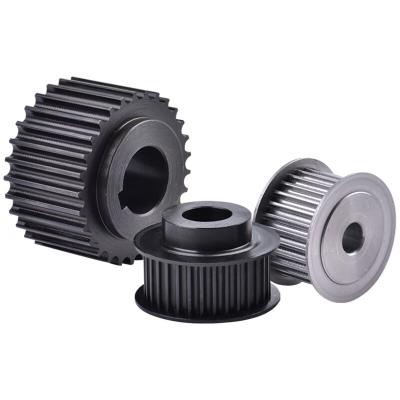Selection and assembly of synchronous pulleys
Selection and Assembly of Synchronous PulleysSelecting and assembling synchronous pulleys is a crucial process to ensure efficient power transmission in various mechanical systems. Here is a guide to help with the selection and assembly of synchronous pulleys:
Synchronous Pulley Selection:
Tooth Profile: Choose the appropriate tooth profile (e.g., HTD, GT2, T5) based on the application requirements such as torque transmission, speed, and load capacity.
Pitch Diameter: Select the pitch diameter of the pulley based on the pitch of the synchronous belt to ensure proper engagement and power transmission.
Number of Teeth: Determine the number of teeth on the pulley to achieve the desired speed ratio and torque transmission for the application.
Material: Consider the material of the pulley (e.g., aluminum, steel) based on factors like load, speed, and environmental conditions to ensure durability and performance.
Synchronous Pulley Assembly:
Alignment: Ensure proper alignment of the pulleys to prevent belt misalignment, reduce wear, and improve power transmission efficiency.
Tensioning: Properly tension the synchronous belt to prevent slippage, ensure efficient power transmission, and extend the belt and pulley's lifespan.
Fastening: Use appropriate fastening methods (e.g., set screws, keyways) to securely attach the pulley to the shaft and prevent slippage during operation.
Maintenance: Regularly inspect the pulleys for wear, damage, or misalignment, and perform maintenance tasks such as cleaning and lubrication to ensure optimal performance.
Safety Precautions:
Safety Gear: Wear appropriate safety gear such as gloves and eye protection when handling pulleys and belts to prevent accidents.
Power Off: Ensure the power is off before starting the assembly process to avoid any unexpected movement of machinery.
Testing and Adjustment:
After assembly, conduct tests to check the alignment, tension, and overall performance of the synchronous pulleys to ensure smooth operation.
By following these guidelines for selecting and assembling synchronous pulleys, you can optimize power transmission efficiency, reduce maintenance costs, and enhance the reliability of mechanical systems in various industrial applications.




